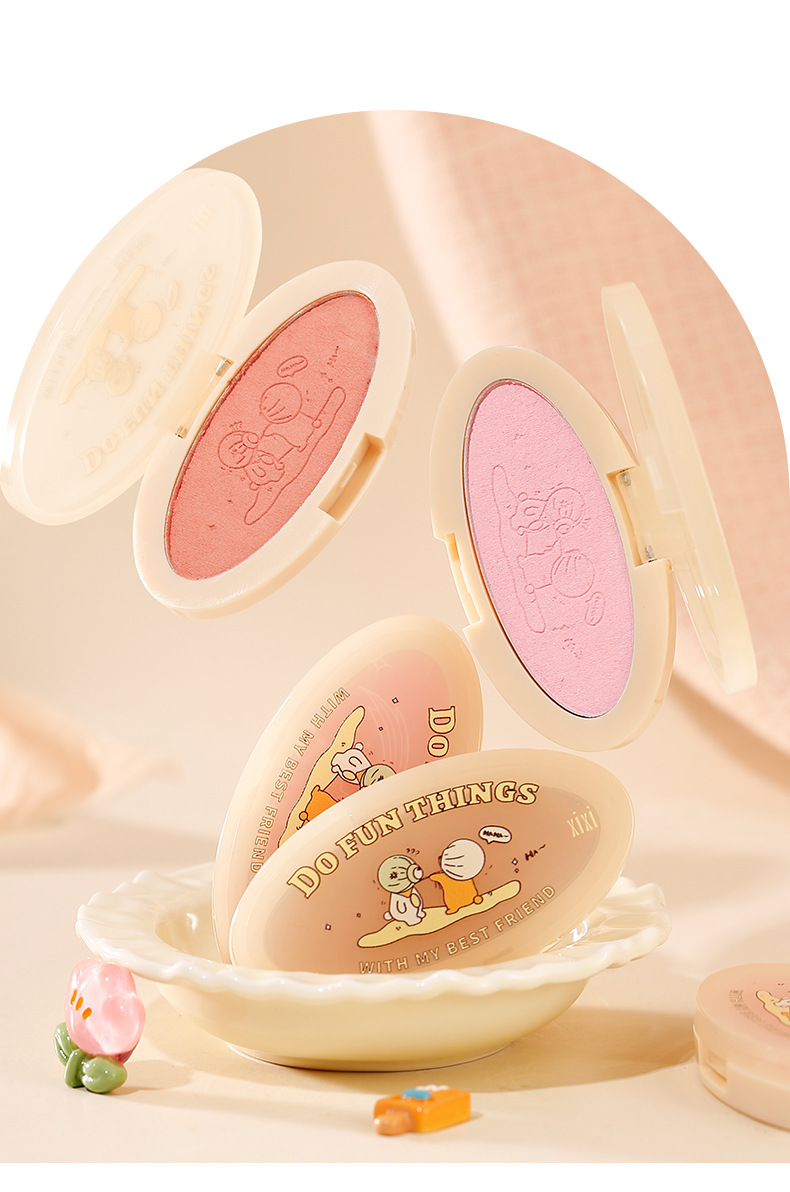About texture
Let’s talk about the texture of blush. Although the choice of color is more critical for blush, the texture also has a great impact on the condition of the skin, the makeup application method and the final makeup feel!
Powder texture: The most common, most common and most used is the powder texture. This type of blush is almost not picky, it is very tolerant to skin types, and it is not difficult to operate. Newbies who are new to makeup can also control the blending range better. In addition, powdery texture blush can extend different types of makeup effects, such as matte, pearlescent, satin, etc., giving a wider range of choices.
Liquid texture: Liquid-textured blushes contain less oil, feel watery, have good permeability, and have high longevity, making them more suitable for oily sisters. However, the patting speed when applying makeup must be fast enough, otherwise it is easy to form color patches with obvious boundaries, and be careful to use it before powdery makeup setting products, otherwise it will be more difficult to blend.
Mousse texture: Mousse texture blush has also been quite popular in the past two years. It feels soft and waxy, a bit like “mud”. When applying makeup, you need to use a powder puff or fingers. The overall makeup effect is a matte soft mist, and the color development is relatively not particularly high. Sisters who are prone to make heavy use of makeup if they are not careful, you can try this type!
About color
Now comes the most important color choices!
Because there are so many different kinds of blushes on the market now. In addition to the regular colors, there are all kinds of blushes, including blushes, blushes, blues, and even blushes. At first glance, they look like color palettes, which is really confusing.
However, most of these are just gimmicks. It’s okay for everyone to buy them for fun. In terms of practicality, we still focus on everyday colors!
Selection of shades Generally speaking, blushes are generally divided into pink and orange tones. Use orange tones for warm skin and pink tones for cold skin. However, this is not absolute. It is just that within a certain color range, we should choose a color that is relatively pink or orange.
Post time: Apr-22-2024







